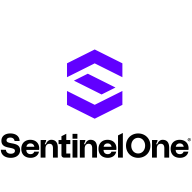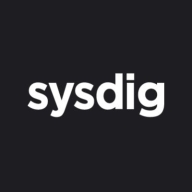

Sysdig Secure and SentinelOne Singularity Cloud Security are both leading solutions in cloud security. Users are generally more satisfied with the overall feature set and deployment ease of SentinelOne Singularity Cloud Security, despite Sysdig Secure being favored for its pricing and support.
Features: Sysdig Secure is praised for advanced runtime security, deep data visibility, and robust policies. SentinelOne Singularity Cloud Security is noted for its AI-driven threat detection, automated response capabilities, and seamless integration with cloud environments. Users find SentinelOne's features more comprehensive for proactive threat management.
Room for Improvement: Users highlight that Sysdig Secure could benefit from an enhanced alerting system and more intuitive integration processes. SentinelOne Singularity Cloud Security needs improvements in dashboard customization and reporting functionalities. While Sysdig Secure focuses on improving user alerts, SentinelOne needs to refine user data presentation.
Ease of Deployment and Customer Service: Sysdig Secure deployment is straightforward, but users report delays in customer service response. SentinelOne Singularity Cloud Security is also easy to deploy with excellent customer service, offering fast and effective support. SentinelOne stands out for its proactive support and quick resolution times.
Pricing and ROI: Sysdig Secure offers competitive pricing and generally yields a good return on investment. SentinelOne Singularity Cloud Security, while costlier, is viewed as worth the investment due to its efficient threat detection and resolution features. Users feel that the higher cost of SentinelOne is justified by its advanced capabilities and reliability.
| Product | Market Share (%) |
|---|---|
| SentinelOne Singularity Cloud Security | 4.7% |
| Sysdig Secure | 3.2% |
| Other | 92.1% |


| Company Size | Count |
|---|---|
| Small Business | 47 |
| Midsize Enterprise | 20 |
| Large Enterprise | 52 |
| Company Size | Count |
|---|---|
| Small Business | 5 |
| Midsize Enterprise | 2 |
| Large Enterprise | 3 |
SentinelOne Singularity Cloud Security offers a streamlined approach to cloud security with intuitive operation and strong integration capabilities for heightened threat detection and remediation efficiency.
Singularity Cloud Security stands out for its real-time detection and response, effectively minimizing detection and remediation timelines. Its automated remediation integrates smoothly with third-party tools enhancing operational efficiency. The comprehensive console ensures visibility and support for forensic investigations. Seamless platform integration and robust support for innovation are notable advantages. Areas for development include improved search functionality, affordability, better firewall capabilities for remote users, stable agents, comprehensive reporting, and efficient third-party integrations. Clarity in the interface, responsive support, and real-time alerting need enhancement, with a call for more automation and customization. Better scalability and cost-effective integration without compromising capabilities are desired.
What are SentinelOne Singularity Cloud Security's standout features?SentinelOne Singularity Cloud Security is deployed in industries needing robust cloud security posture management, endpoint protection, and threat hunting. Utilized frequently across AWS and Azure, it assists in monitoring, threat detection, and maintaining compliance in diverse environments while providing real-time alerts and recommendations for proactive threat management.
In the cloud, every second counts. Attacks move at warp speed, and security teams must protect the business without slowing it down. Sysdig stops cloud attacks in real time, instantly detecting changes in risk with runtime insights, a unique AI architecture, and open source Falco. Sysdig delivers live visibility by correlating signals across cloud workloads, identities, and services to uncover hidden attack paths. By knowing what is running, teams can prioritize the vulnerabilities, misconfigurations, permissions, and threats that matter most. From prevention to defense, Sysdig helps enterprises move faster and focus on what matters: innovation.
Sysdig. Secure Every Second.
We monitor all Cloud-Native Application Protection Platforms (CNAPP) reviews to prevent fraudulent reviews and keep review quality high. We do not post reviews by company employees or direct competitors. We validate each review for authenticity via cross-reference with LinkedIn, and personal follow-up with the reviewer when necessary.